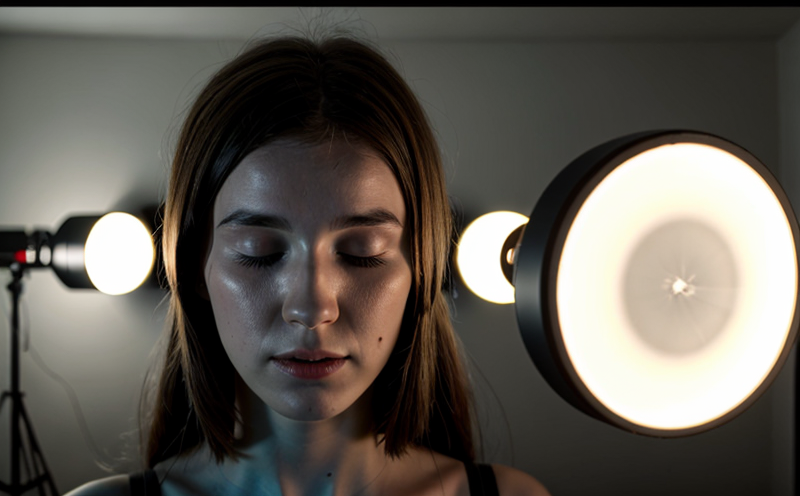IEC 61549 Flicker Testing of Special Purpose Lamps
The International Electrotechnical Commission (IEC) standard IEC 61549 specifies the methods for measuring and evaluating flicker in lighting installations. Flicker is a phenomenon that can occur when alternating current passes through an electrical circuit, causing variations in the brightness of artificial light sources. Special purpose lamps, such as those used in medical facilities, roadways, or theatrical stages, are particularly susceptible to flicker due to their specific operating conditions and design.
Special purpose lamps often operate at higher frequencies compared to standard lighting fixtures, which can exacerbate the flicker effect. The IEC 61549 standard provides a framework for testing these lamps under controlled conditions to ensure that they meet safety and performance requirements. This is crucial because flicker can lead to discomfort, visual fatigue, and even health issues in users.
The testing process involves several key steps. First, the lamp must be prepared according to the standard's specifications, which may include adjustments for temperature and other environmental factors. The test setup typically includes a photometer capable of measuring light intensity at various frequencies. Once calibrated, the photometer is used to record the flicker characteristics of the lamp.
The results are then analyzed using statistical methods to determine the flicker index or stroboscopic effect of the lamp. The flicker index is a measure that quantifies the perceived flicker intensity and frequency. A lower flicker index indicates better performance, as it suggests less perceptible variations in light output.
It's important to note that the testing criteria can vary depending on the specific application of the special purpose lamp. For instance, medical lighting must adhere to stricter standards than theatrical stage lights due to differences in user sensitivity and safety requirements. Compliance with IEC 61549 ensures that these lamps perform reliably under real-world conditions, enhancing both user comfort and system efficiency.
- Medical facilities: Ensures that lighting does not interfere with diagnostic procedures or patient care.
- Roadway installations: Prevents flicker from causing visual distraction for drivers at night.
- Theatrical stage lights: Minimizes the stroboscopic effect to avoid compromising performances.
Applied Standards
IEC 61549 is one of several standards that govern flicker and stroboscopic effects in lighting installations. It is complemented by other IEC standards such as IEC 60039, which provides general principles for lamp construction and classification, and IEC 62788, which focuses on the measurement techniques used in these tests.
While IEC 61549 is specifically aimed at special purpose lamps, it aligns closely with other international standards such as ANSI/IES RP-22 for general lighting fixtures. These standards collectively ensure that flicker testing and evaluation are conducted consistently across different types of lighting products.
The standard also references ISO 15675-3, which provides guidelines on the measurement of light and visual effects in indoor environments. This ensures that the test results are not only accurate but also comparable with other lighting installations.
Eurolab Advantages
EuroLab offers a comprehensive suite of services to ensure compliance with IEC 61549 and related standards. Our team of experts is well-versed in the intricacies of flicker testing, providing clients with accurate and reliable results.
- State-of-the-art equipment: EuroLab utilizes cutting-edge photometers capable of measuring light intensity at high frequencies, ensuring precise flicker index calculations.
- Experienced personnel: Our engineers have extensive experience in lighting technology and compliance testing, allowing for thorough interpretation of test results.
- Comprehensive reporting: EuroLab provides detailed reports that not only include the flicker index but also provide insights into potential areas for improvement.
EuroLab's commitment to quality and accuracy ensures that our clients can trust us with their testing needs. Whether you are a manufacturer, supplier, or designer of special purpose lamps, we offer the expertise and resources necessary to meet your compliance requirements.
International Acceptance and Recognition
- European Union: IEC 61549 is widely accepted in the EU, with many member states requiring compliance for special purpose lamps.
- Australia/New Zealand: The standard is recognized and often required by regulatory bodies in these regions.
- United States: While not as strictly enforced as in some other regions, IEC 61549 is recommended for special purpose lamps to ensure high standards of performance and safety.
- Japan: The standard's principles are aligned with Japanese lighting industry practices, ensuring compatibility and ease of market entry.





